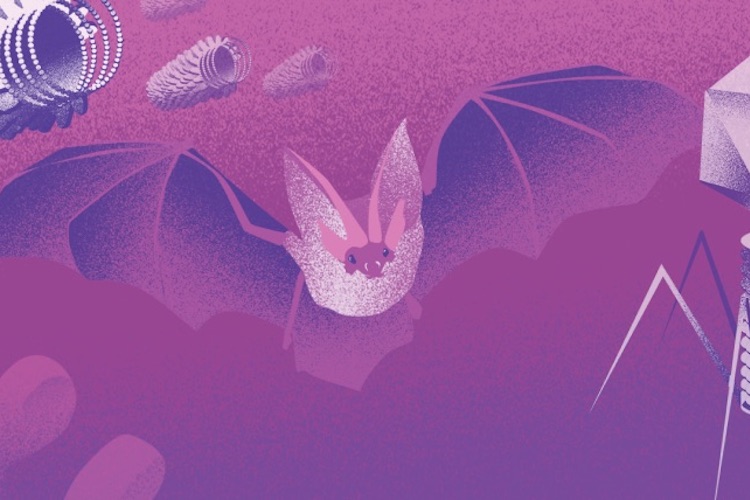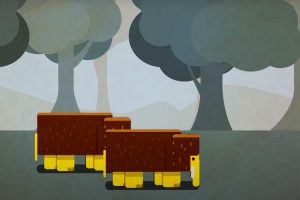Impacts of Mega Dams on Forest Animals
The construction of dams in Central Amazonia proved to have long-term negative effect on the fauna diversity o...

In November Proceedings of the Royal Society B: Biological Sciences published an article called “Ediacaran skeletal metazoan interpreted as a lophophorate“. We asked one of the authors, Amelia Penny from the University of Edinburgh, to comment on this study.
The evolution of skeleton building drastically broadened the range of lifestyles available to animals. Among the earliest skeletal animals was Namacalathus hermanastes, which was a small, goblet-shaped animal a few centimeters across. It lived on the seafloor at localities all over the world during the Ediacaran Period, around 550 million years ago. At this time, oxygen levels in Earth’s oceans and atmosphere were likely much lower than today and marine ecosystems were still dominated by microbes, with animals only a minor component.

In this study, we collected and examined new specimens of Namacalathus from Namibia, and used electron microscopy and 3D reconstruction techniques to make new observations of its morphology and the microstructure of its skeleton. Due to its simple morphology, Namacalathus has generally been interpreted as a sponge or cnidarian (a diverse group which includes sea anemones, corals and jellyfish). However, our study presents another possible interpretation: Namacalathus may instead have belonged to the Bilateria, a more advanced group which contains all bilaterally symmetrical animals.
Our observations suggest that Namacalathus reproduced by bilaterally symmetrical budding, with pairs of offspring growing directly from their parent. This suggests that the Namacalathus animal itself may have been bilaterally symmetrical. Furthermore, themicrostructure of Namacalathus’ shell shows similarities to the skeletons of the earliest examples of a group of Bilateria called the lophophorates, which includes the brachiopods and bryozoans.

Reconstruction of Namacalathus as a lophophorate. Copyright: John Sibbick.
Animals are a key part of many of the world’s ecosystems, so tracing their origins and evolution is crucial to understanding the history of life on Earth. Diverse animals with active life strategies and complex skeletons appear rapidly in the fossil record around 520 million years ago, in an event called the Cambrian Explosion. However, molecular clocks estimate that animals originated over 600 million years ago, leaving a large delay between the estimated origin of animals and their rise to ecological dominance.
First described from fossilized microbial reefs in in southern Namibia in 2000, Namacalathus has since been found in Canada, Oman and Siberia. It is one of a small number of early skeleton-building animals which colonized marine environments all over the world. They are pioneers of an important strategy – skeletons provide support and protection, act as mineral stores and enable animals, including ourselves, to grow to large sizes and adopt highly mobile, active lifestyles.
Namacalathus is not the first Ediacaran animal to be assigned to an advanced group; a possible early mollusc called Kimberella was discovered in Australia in 1966. Our findings support the idea that complex animal groups evolved during the Ediacaran, long before the diversification of life habits and morphologies in the Cambrian. This suggests that the Cambrian Explosion was not the result of the rapid origin of animals, but may instead have been a consequence of a combination of biological factors and the lifting of environmental limitations.
With new ideas about the early evolution of complex animals, our group is researching how these early skeletal animals lived. We are also using geochemical proxies for environmental conditions to investigate possible links between the evolution of complex animals and Earth’s changing environment, particularly oxygen levels in the oceans.
There is an emerging picture of Ediacaran organisms and ecosystems as more complex and advanced than has generally been thought. There is increasing evidence that the evolutionary radiation of animals was not a geologically instantaneous event, and instead commenced tens of millions of years earlier. However, it is clear that the Ediacaran was an unusual time in the history of life, with most large organisms adopting low-energy, sessile lifestyles instead of the active foraging and hunting which became prevalent in the Ediacaran. Further research aims to investigate the interactions between life and environments at the beginning of animal life and why,if complex animals evolved so early, they retained such restricted lifestyles for so long.

The construction of dams in Central Amazonia proved to have long-term negative effect on the fauna diversity o...

Biophysicist Maxim Frank-Kamenetskii on DNA supercoiling, topoisomerases, and enigmatic organisation of chromo...

Geneticist Shamil Sunyaev on the difference between Mendelian and complex traits, linkage methods in genetics,...